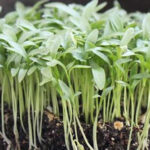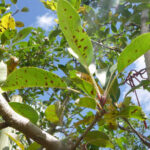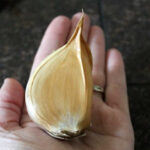One thing that does not excite me in the garden is spider mites. Spider mite populations are a lot like aphids and thrips in that they are common pests that have strength in numbers. These plant-feeding mites need aggressive control, so a spider mite infestation doesn’t build up in your garden.
They not only feed on plants, but they also weave webs around plant leaves and stems. Heavily infested plants have to deal with their characteristic webbing. That’s why it’s so important to be able to identify, control, and prevent spider mites overall.
In this piece, we’ll talk about spider mites, their life cycle, and how to identify which species of spider mite you’re dealing with. After that, we’ll discuss methods of control and prevention. Read on to find out how to rid your garden of spider mites!
Subscribe to the Epic Gardening Podcast on
What Are Spider Mites?
Spider mites are members of varying mite species with piercing, sucking mouthparts that feed on individual plant cells. Most of the time you won’t notice spider mites because of their size. They aren’t visible to the naked eye, but you can see them with a 10x magnifying glass. Often they look like small, light dots crawling on leaves or in webs. They are just .1 inches at maturity.
Much like aphids, they live in colonies of 100-plus members who congregate on the undersides of leaves. A spider mite infestation is easily identifiable when their silk webbing is wound around infested leaves. They differ from webs spiders make because they are more condensed and aren’t loosely draped over plants – nor do they have an orb or tent-like structure.
Adult males have eight legs, an oval body, and two red eyespots at their fronts. Females usually have 1 large spot and bristles all over their bodies. Immature stages of spider mites have much smaller bodies and possess only 6 legs when they first hatch. Spider mite eggs are translucent and sphere-shaped. They become milky just before they hatch.
Types of Spider Mites
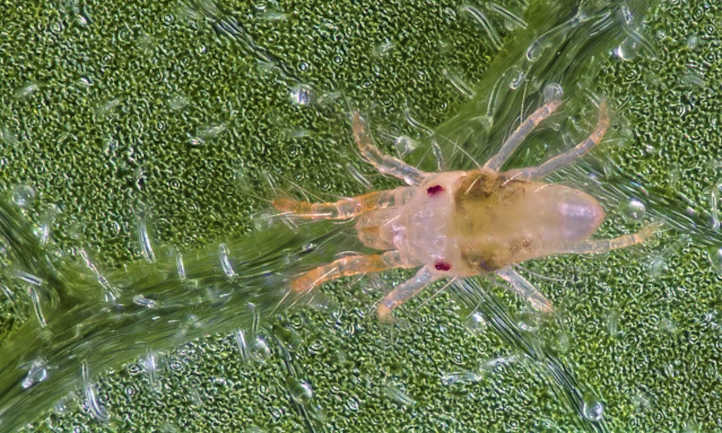
Thankfully, spider mites do not have as many specialist species as aphids do. But here are some of the most common spider mites you’ll find in your garden. Each of these is somewhat specialist in their feeding, but also more generalized than other pests. Most likely, you’ll deal with twospotted spider mites.
Carmine Spider Mite (aka Red Spider Mite): Feeds on many flowers and ornamental plants, such as carnation, chrysanthemum, cymbidium, gladiolas, marigold, pikake, and rose, as well as many vegetables and fruits. They congregate on the undersides of leaves and feed in pockets near leaf veins and midribs. Adult females are reddish and shaped like an ellipsis. Males are wedge-shaped and colorless, save one black spot on their bodies.
Two-Spotted Spider Mite: One of the most widespread of all spider mites, twospotted spider mites have over 300 host plants in the ornamental and weed categories. All twospotted spider mite species have two pronounced spots on either side of their bodies.
Pacific Spider Mite: Prevalent in coastal grape-growing areas, and range from amber to light green. Spots appear on the rear of the abdomen as they begin feeding. They feed on the upper portions of grapevines and come out early in the season.
Strawberry Spider Mite (aka Banana Spider Mite): Similar in appearance to the twospotted spider mite. Males of this species diverge in appearance from the twospotted spider mite solely in their genitalia. They tend to feed on strawberries but will congregate along with twospotted spider mite populations.
Tumid Spider Mite: Hosts include numerous weeds, annual vegetable crops, fruit trees, and ornamental plants. Adult mites have 8 legs with long hairs on them. Female mites are reddish with dark marks, or clear to greenish when they are actively feeding.
Spruce Spider Mite: Consume conifer trees, especially spruce, Fraser, Canaan, and balsam firs. Their body color varies by host, ranging from dark red to pale or dark green. Male bodies are ovular. All forms have long hairs on their backs. Eggs have a single stripe down the back – a trait unique to spruce spider mite.
Southern Red Mite: Feeds on broad-leaved evergreens in the Ericaceae and Aquifoliaceae genii. Also common on azalea, rhododendron, mountain laurel, holly, rose, viburnum, firethorn, and yew. Mature adults are purplish to red with eight legs. Mostly active in spring and fall, where red eggs are laid on the undersides of leaves to overwinter.
Willamette Spider Mite: Similar to the Pacific Mite but smaller. Feeds in the early season, and is pale yellow. Found on the shadier sides of grapevines. Can cause shoot damage to new vine growth.
Life Cycle of Spider Mites
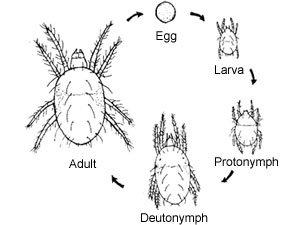
Spider mites go through five different stages of life: egg, larva, protonymph, deutonymph, and adult. While there are some slight variables in the life cycle of spider mites, this layout of the twospotted spider mite and its normal life cycles gives a good indication of the various phases.
Egg
Adult spider mites lay eggs on the underside of leaves. An adult can lay as many as 100 eggs throughout a three-week period of time. Unfertilized, the spider mite egg will become male. Fertilized eggs become female, and it’s typically about a ratio of 3 males to every female.
Larvae
When the eggs hatch, six-legged colorless larvae emerge and immediately begin to feed. They feed on plant tissue and sap, causing paler spots to form on the leaves. As they feed, they begin to change color and start to develop their two dark spots.
Protonymph
Once larvae have consumed enough food, they become temporarily inactive and develop into an eight-legged protonymph. This is the first nymphal stage. Both stages of nymphs can form fine webbing.
Deutonymph
After a short period as a protonymph, and once sufficient feeding has occurred, another resting period happens. Shortly thereafter, it goes through a molting process and becomes an eight-legged deutonymph. Both stages of nymphs can form webs.
Adult
After a short period as a deutonymph and the normal feeding and rest cycle, the deutonymph molts again into the adult stage. The eight-legged adult emerges from its prior skin and is now ready to begin laying eggs to restart the cycle. Adults can carry out mite reproduction sexually or asexually, although most unfertilized eggs hatch male mites. The color of the adult often depends on what crop it has been feeding on. Adult spider mites can form webs.
This process normally takes about 14 days. However, in warm weather, the process becomes much more rapid, and it can be as short as 7-10 days.
Identifying Spider Mite Damage
Spider mites can affect outdoor plants and indoor plants alike. They do so by sucking the contents of the cells of their host plants. While infested plants may not show damage from twospotted spider mites or other spider mites at first, it’s important to control them.
The earliest and most obvious sign of these pest mites is yellowed or bronze stippling of leaves. Leaves may shrivel and fall off prematurely. Webbing covers all plant parts in the later stages of severely infested plants. Drought stress usually worsens the problem. Fruit trees can usually withstand an infestation for at least a year. Other plants like annual plants, for instance, are much more susceptible to the damage mites cause due to their reliance on leaves to produce annual fruit. Loss of leaves can lead to sunscald, especially if pest populations are out of hand. At the end of an infestation, spider mites will kill plants.
Spider mites prefer hot dry weather and dusty conditions. Drought conditions are optimal for their proliferation. They also love plants that have higher amounts of nitrogen, phosphorous, and carbohydrates in their cell tissue. This is why irrigation in commercial fields in otherwise-dry areas tends to create an ideal breeding ground for spider mites. With that in mind, drip irrigation can promote conditions for spider mites as well, because watering at the base of plants doesn’t wash them away. However, that doesn’t mean we shouldn’t use drip irrigation types in our management strategies.
Because temperatures tend to be around the right range for moderate to rapid mite population expansion, they can be common in an indoor hydroponic setup. And because leaf stippling is a symptom of both spider mite damage and nutrient deficiency, they can run wild. Look out for them in your hydroponic system if you have one.
Controlling Spider Mites
We’ve discussed the most common spider mites out there, particularly the twospotted spider mite. Now let’s discuss how to control spider mites of all types so you can prevent spider mite damage. As with our other pest-related topics, we recommend an integrated pest management regimen.
Cultural Control
To keep spider mites under control in garden areas, clean and remove dust from plants regularly. If you find twospotted spider mites on your plants, hit them with a strong stream of water. Much like aphids, this causes detachment of their mouthparts from their bodies, which leads to their death. In hydroponic settings, keep any new plants you want to add to your hydro garden separate for at least 2-3 weeks to monitor them for pests. Give your plants a consistent amount of water, as spider mites attack water-stressed plants first. Remove any damaged leaves and destroy them. Do not compost them.
Biological Control
Beneficial insects, like predatory mites, will keep twospotted spider mites and others under control too. Predatory mites are great because they’ll leave your plants alone and consume spider mites and their eggs. Other natural enemies in the form of predatory insects include lady beetles and natural predators, lacewings.
Spider mite destroyers are also natural enemies of spider mites, and consume them as predatory mites do. Destroyers are a species of lady beetles. While it may be tempting to purchase these natural enemies from a producer, you may be able to lure these insects in from the wild by planting plants they enjoy and keeping them around longer as a result. Also, using chemical control that wipes out beneficial insects and a feeding population of twospotted spider mites isn’t sustainable. Instead of using chemical control that is broad-spectrum, use specialized organic methods.
Insecticidal Control
Plant-based insecticidal oil types like garlic extract, clove oil, mint oils, rosemary oil, cinnamon oil, and others are an effective organic control for spider mites. When plants are water-stressed, or when temperatures exceed 90 degrees Fahrenheit, do not use these oils, as they can cause significant damage to plant tissue in those conditions. Wait for cooler temperatures to spray plant extracts.
Insecticidal soap and neem oil are excellent modes of controlling spider mites. Other horticultural oils are useful, such as canola oil, and cottonseed oil. When you’re spraying horticultural oils, insecticidal soap, and neem oil – as well as the plant extracts we mentioned above – do so just before the sun rises or sets. This prevents deterrence or damage to beneficial insect populations, like pollinators. Do not spray in high winds, and wear protection. Reapply at intervals of 7 to 10 days until infestations are adequately controlled.
In hydroponic systems, use pure azadirachtin rather than neem oil, insecticidal soap, or horticultural oil. The azadirachtin is strong enough to deter spider mites and gentle enough to not cause damage to plants.
Preventing Spider Mites
Keep your plants healthy to prevent pest infestations. As we discussed in the cultural control section, water-stressed plants are most susceptible, so use consistent watering as a preventative method. Well-moistened soil will also prevent infestations. If you’ve come across a seriously damaged plant that is infested with mite spiders, remove the entire plant and throw it away to keep its spread at bay. And, as we mentioned before, wipe the dust from plant leaves to assist in keeping conditions disadvantageous for these important pests.
Frequently Asked Questions
Q: What are the first signs of spider mites?
A: It starts with yellow stippling on leaves. Occasionally, you’ll see what looks like spiderwebs between leaves, too.
Q: What do spider mites do to humans?
A: They can’t do much directly. But they cause a lot of grief if they get out of hand in gardens.
Q: Can plants recover from spider mites?
A: They can, as long as action is taken as soon as possible.
Q: Where do spider mites come from, anyway?
A: These mites are so tiny that you might be carrying them into your garden or indoor grow room yourself, but the most common source for spider mites is actually live plants. It’s a good idea to quarantine new plants for a couple of weeks before putting them among your other plants.



